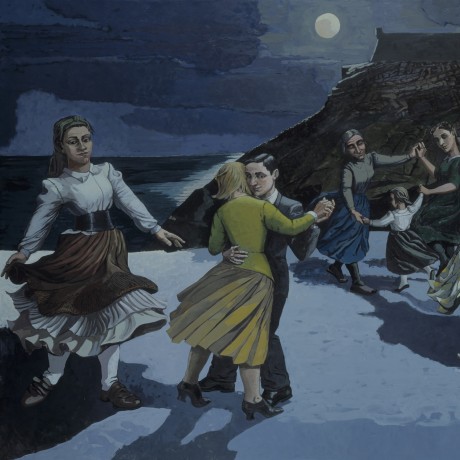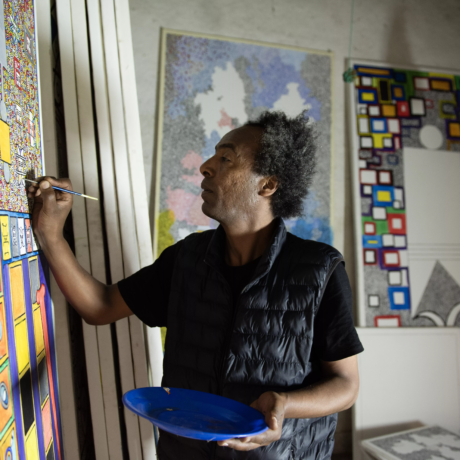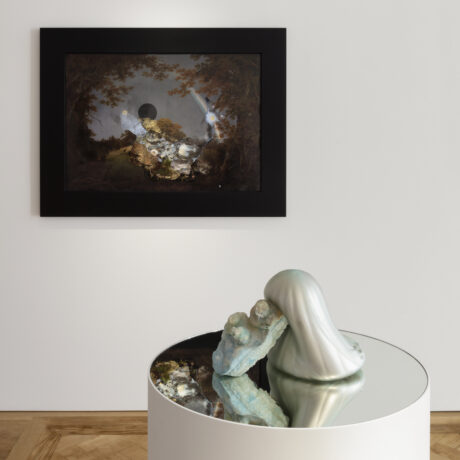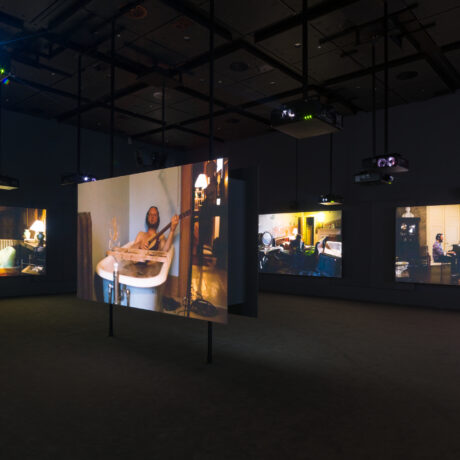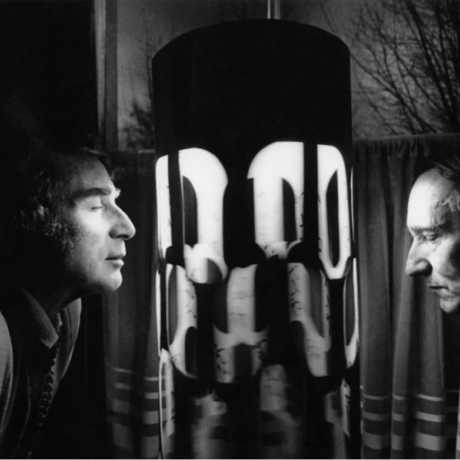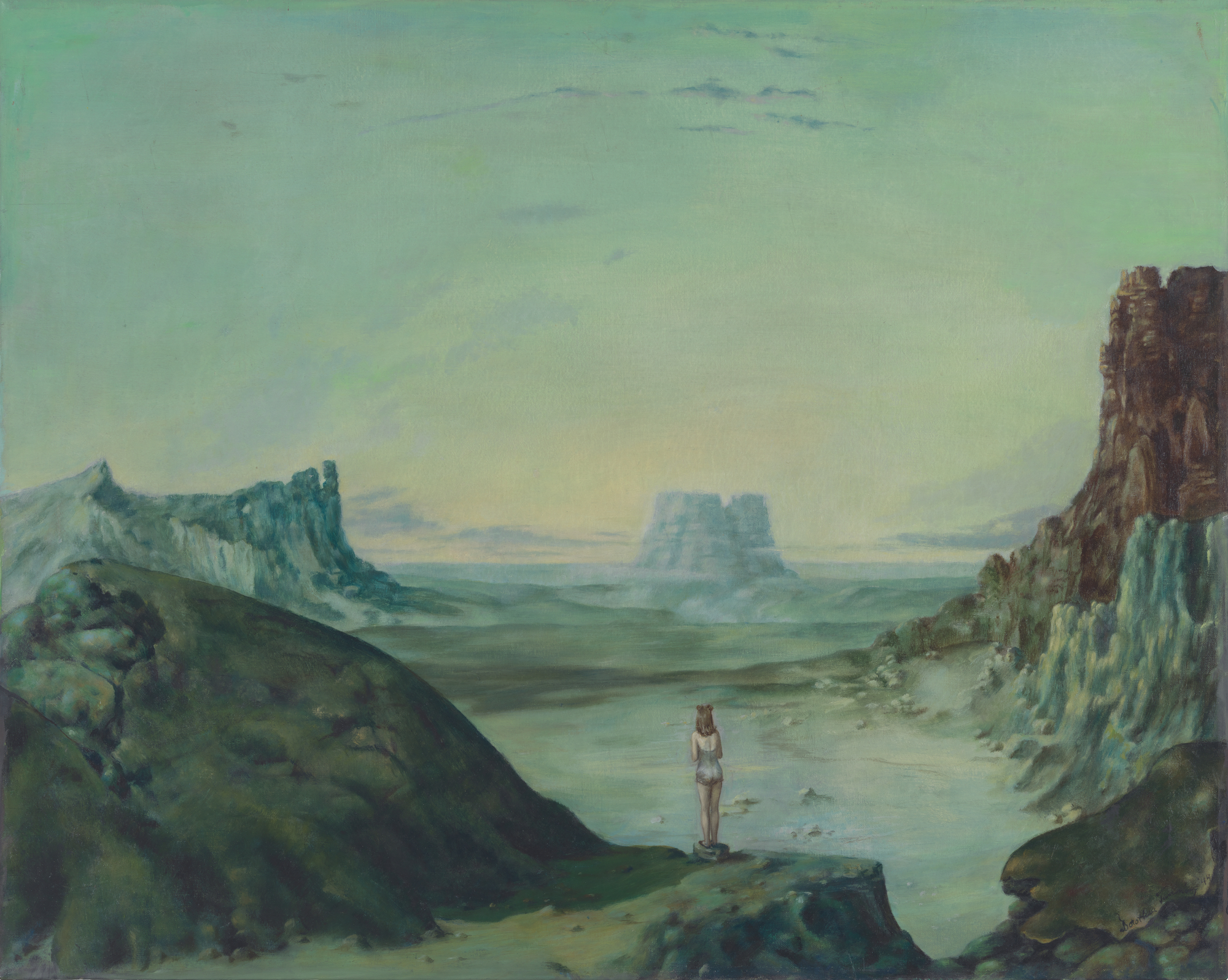
This Artwork Changed My Life is a fortnightly series of personal essays that share the stories of life-changing encounters with art.
I had been out of London for a month when I first saw Self-Portrait, fresh from my first-ever writing residency (a month of almost complete isolation, barely talking to anyone, writing furiously, reading, running through misty early-spring woods). In the month previously I had written, deleted and rewritten tens of thousands of words, and I knew the book (my second novel) was taking shape. But still I felt fragile, undone by the deep strangeness of the year before.
My first novel had recently come out, and had surpassed all my wildest expectations. I had been prepared, pessimistically but realistically, for some nice reviews and perhaps for some friends of my parents to buy a copy or two. What I wasn’t prepared for was that it would be nominated for a major prize, and how this would both feel like winning the lottery, and like my work was being examined under a magnifying glass, only to be found lacking.
It was true, I told myself as I pored over sneering internet forums and social media. I did write ‘silly little books’. I felt hot with shame at the idea that the words and story I had written with such passion and intent could be reduced (revealed, even) in this way.
“The woman portrayed is a woman on the edge of something, a woman earnestly searching for something”
Returning to the city felt like somebody had turned all the colours up too high. Feeling restless and edgy, tired of words, I went to the Tate Modern to see a Dorothea Tanning retrospective. I was immediately calmed. When I am in a gallery I feel a bit like I am visiting a church or cathedral abroad, waiting to be moved without knowing why and without knowing if it will happen. Waiting for wonder to hit, always slightly disbelieving it will.
Self-Portrait features a woman standing out on the edge of a strange and rocky landscape. The diaphanous, subdued colours give it the air of a fairytale illustration, or a dream. The woman is wearing underwear or a bathing suit only, and what is ahead is uncertain. It’s hard to tell from her posture whether she is confident or afraid or neither, there’s an ambiguity in it that I like, allowing me to see something different every time.
When I have looked at it since, even grainily on a computer screen or phone, I sometimes use my reaction to it as a bellwether for my feelings. Do I want to plunge into the possibly hostile outcrops? Or could what seems like wasteland be softness, plush pastel-coloured water veiled by mist?
When I saw the painting I felt at once a deep sense of comfort and possibility. The woman portrayed is a woman on the edge of something, a woman earnestly searching for something, and I was moved by how openly Tanning had shared this image of herself. There was a sincerity that seemed revelatory, especially to me, trapped in my own self-doubt, often feeling a kind of shame about my ambitions and how my writing fell short of them.
“Why shouldn’t she be the sole explorer of a beautiful world of her creation? Why shouldn’t we?”
What could it mean to see yourself like that, and to present this version of yourself to the world? To see yourself as a person going fearlessly and curiously into something new and beautiful, believing in its worth? To position yourself as an artist with total unselfconsciousness, like you could deserve it?
Writing fiction is different from painting a self-portrait, but it still exposes an image you have of yourself to the world. It still reveals you in ways obvious and subtle. To write without cynicism and with love, to write about the things big and small that move you, to say “I am curious, and I want”, is an act of vulnerability.
Self-Portrait, for me, is vulnerable in this way, but defiant too. Belief in a creative vision and her power to explore it is presented almost casually, and after all why shouldn’t she be the sole explorer of a beautiful world of her creation? Why shouldn’t we?
It is no small thing to write a book, to sit there and write tens of thousands of words, hundreds of thousands. The act of making a piece of art cannot be disregarded as a fluke, brushed off as effortless, yet back in those days (and even now, sometimes) I found myself downplaying it, as if the desire to make something, and hopefully to be successful in my making, was somehow unbecoming. ‘Silly little books’, made up of years of work, hundreds of painful early mornings, the constant striving towards something bigger than myself.
The tiny figure of Self-Portrait, positioning herself this way on the cusp of such vastness, makes no apologies for her work, for her vision, and her journey towards it. The world she looks out on is expansive, and what she desires may be out of reach, shifting and formless, with some way to go. But it is not a closed-in place, it is not one of the little traps it’s easy to make for ourselves.
“The tiny figure of Self-Portrait makes no apologies for her work, for her vision, and her journey towards it”
In the years since seeing that painting, the world has changed and my life has changed too. Much has been lost collectively, I have lost some things personally, but (much as how I write in a recent email to a dear friend that “writing will always be there for me”) the landscape still exists, swirling and glowing. On my first post-lockdown trip to a bookshop I cried to see my books lined up together, my small ‘body of work’, the glorious solidity of that term.
A few months ago I hung a print of Self-Portrait up in the room where I usually write, above a desk I bought with my own money. I put it there so that I could look at it every day, because words were slipping from my grasp once more and time felt fragile, and I needed to be reminded of what it felt like to believe in possibility, in creating a space for my work and for myself. When I sat on my office chair and stared at it I remembered standing in front of the real painting, remembered both the vertiginous calm and the shame of wanting, the shame of the puny-seeming things I wrote about.
But there is nothing puny about the propulsive nature of want, and there is nothing puny about writing about love, violence, the things a life is made of. These days, I am not ashamed to admit that I am ambitious, that I want to make great art, that some days I think might be capable of it. I am not ashamed to position myself as a person searching for beauty, as a person who believes it is out there for me.
Sophie Mackintosh is a British novelist and short story writer. Her debut novel The Water Cure was nominated for the 2018 Man Booker Prize. Her second, Blue Ticket, was released in 2020
This article originally appeared in Elephant 47: Spring Summer 2022, available to buy here
This Artwork Changed My Life
Absorbing personal stories of the lasting impact that art can have
READ MORE